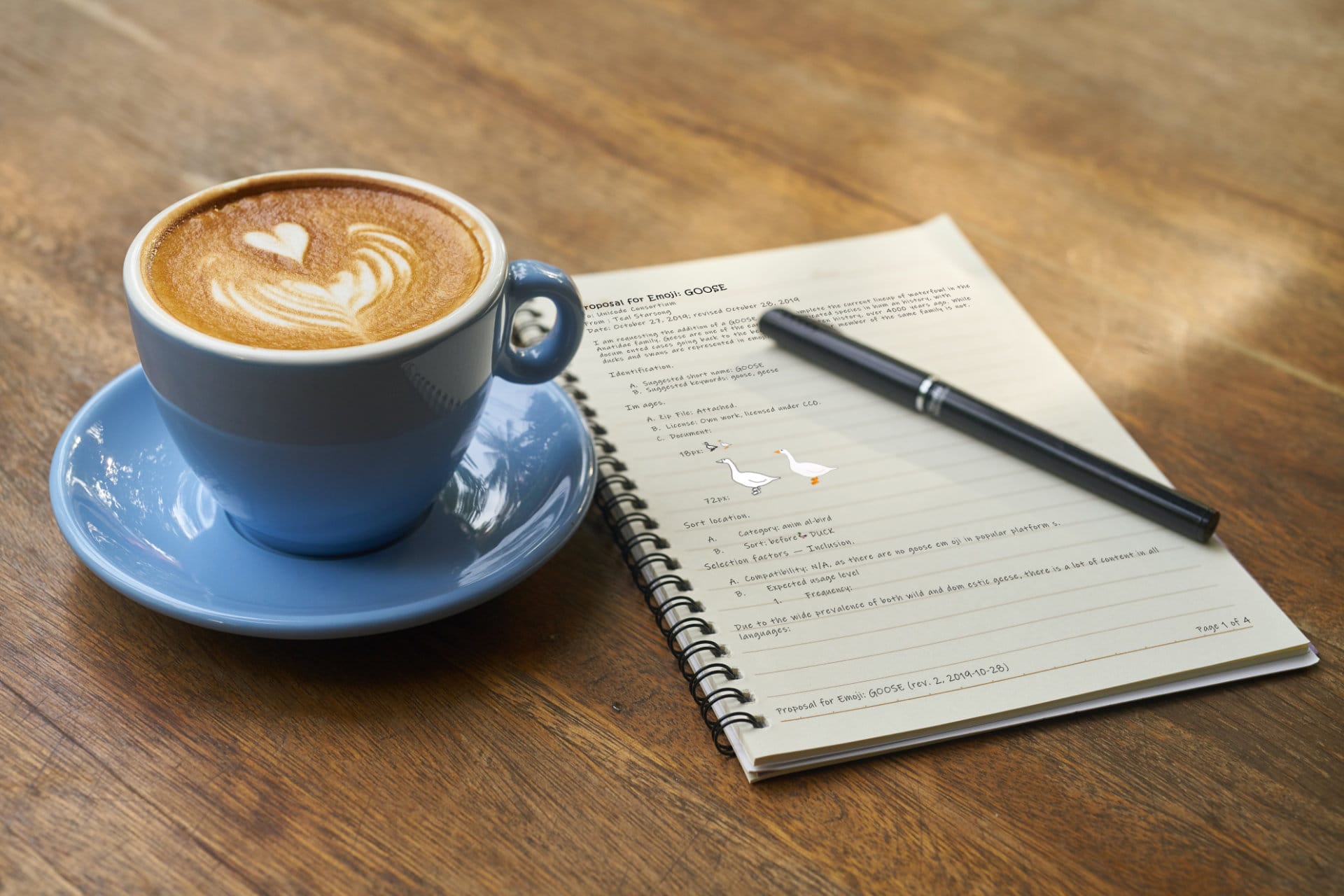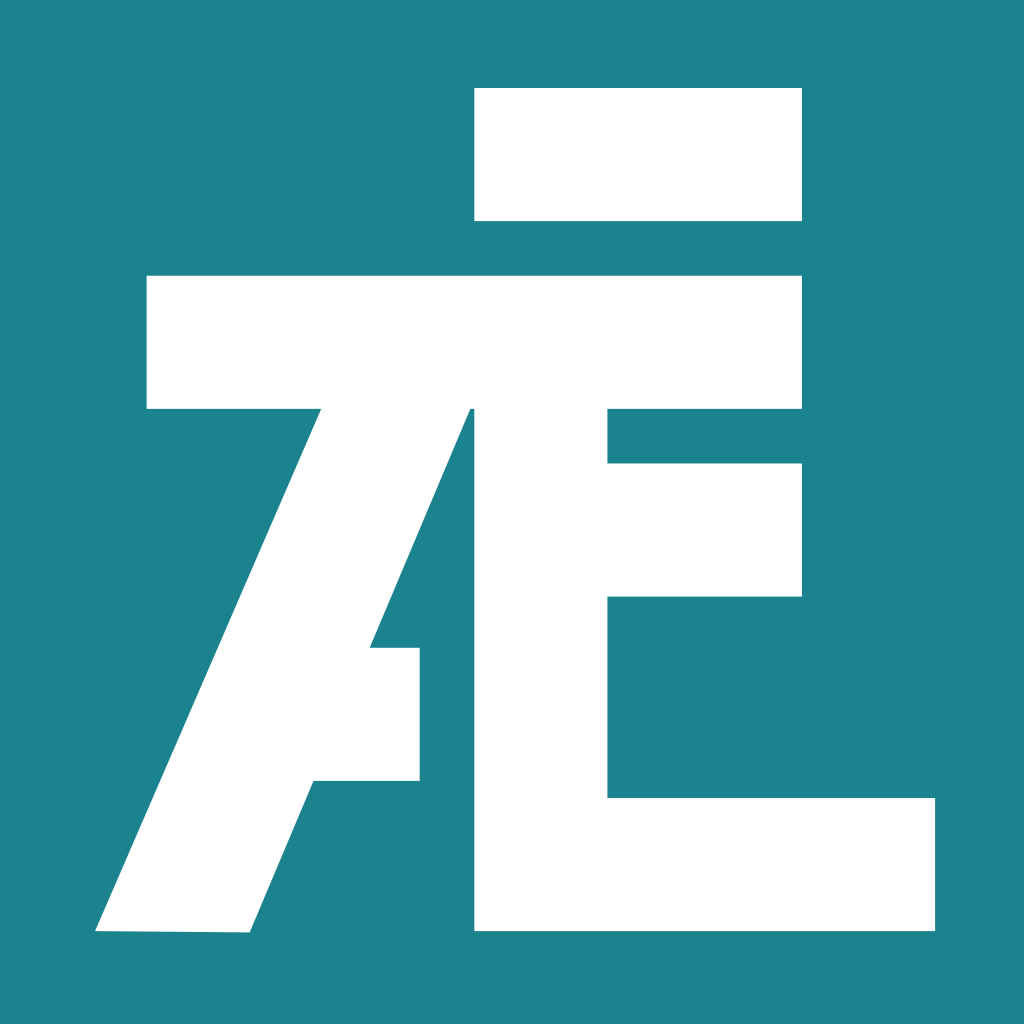A Big Honking Deal, or How We Got the Goose Emoji

Everybody is using emoji these days. They have become an integral part of our digital language, have been the subject of court cases, have jumped out of the digital realm and into cakes, apparel, and other merchandise – in short, they are ubiquitous.
A Brief History of Emoji
First, there were emoticons - text-based representations of faces and emotional states that quickly pervaded digital text-based communication from the early 1980s on. Scott Fahlman proposed :-) and :-( to signal happiness or sadness. With the creativity of a global community of internet users, these emoticons became extremely varied and saw widespread use quickly, but they remained character-based, and often limited to language-specific character sets (or the "least common denominator", 7-bit ASCII).
Emoji, which unlike emot-icons actually are a type of icons, originated in Japan in the late 1990s. Initially created for the i-mode mobile platform, these little images were intended to facilitate electronic communication by encoding complex information into little, descriptive icons. Emoji remained popular in Japan and virtually unknown in the rest of the world until in 2008, the iPhone integrated them for the Japanese market. Only a short while later, the Unicode Consortium would standardize on a set of emoji, which quickly led to increased adoption across other platforms and operating systems.
How Do Emoji Happen?
The initial set of emoji was simply grandfathered in from the original set of 176 i-mode emoji, covering a range of use cases. Although their visual representation was open for implementers to change and adapt to their environments, the set of emoji and their meanings was defined by the Unicode Consortium, who then also took on stewardship of emoji as such. The process has seen some iteration over the years, but basically, people can put in proposals for new emoji, the consortium's emoji working group would judge those proposals on form and content, and then suggest to reject or accept the proposals for inclusion in the next release of the Unicode standard.
At first, proposals mostly came from a more technical group of people who were already part of the Unicode Consortium or moved in similar spheres. It was not until the late 2010s that "regular people" started proposing new emoji at scale – by then, the cultural impact of emoji had become clear, and people all over the world felt an urge to see the concepts that were important in their day to day reflected in the emoji set. Some notable examples of this increasing breadth of representations were a set of emoji representing people with disabilities proposed by Apple in 2018, the Person With Headscarf emoji proposed by a 15-year-old Saudi student from Berlin in 2016, and letting emoji represent different skin tones (by initiative of the Unicode Consortium, 2015) and genders (Unicode Emoji Subcommittee).
The process is quite straightforward, but can be annoying or feel unfair. The Unicode Consortium has a basic template for submitting new emoji proposals that people can just fill out. Before starting with that, would-be proposers need to check whether the emoji already exists (as its meaning could be part of another emoji) and that it has not been proposed in the two years prior (to avoid repeat spamming proposals that have no chance of acceptance). If that's all clear, the proposal template asks for information such as the desired emoji name and imagery, emoji category, and where it should be slotted in to the sort order. Finally, the most important part is demonstrating the proposed emoji is warranted: It should be distinctive, but not overly specific; it should ideally be usable together with existing emoji for added semantic power; and it should fulfill an actual need and have a good chance to be used by people instead of just taking up valuable bits.
The Goose Emoji Proposal honk
So I did just that in October 2019, proposing the GOOSE emoji. You can read through the proposal document (PDF) yourself, if you like. There really isn't much to it:
- What exactly is being proposed? e.g. is it a single emoji, a family of emoji, modifiers, ...? In this case, I am proposing a single emoji, GOOSE, because I identified a gap in species representation: while swans and ducks got emojis right at the beginning, geese – who are in the same family – were not represented.
- What should it look like, visually? Although implementers of Unicode are free to adapt the visual representations of emoji, the Unicode Consortium asks that submitters include a freely licensed visual representation of their proposed emoji. This is to ensure that there is no licensing issue and everything can be freely shared. In the case of the GOOSE emoji, I just drew a goose in Inkscape and licensed it CC0.
- Why should it be included? This is the meat of the proposal. You're asked to estimate the expected usage level, and you better bring some data. In the case of geese, that was pretty easy, since geese have been around for thousands of years, so there is a lot of content about geese on the internet. I also compared the popularity of GOOSE with that of other animals that were already represented in Unicode (turns out, geese are especially popular around Christmas in the northern hemisphere, weird). Geese are also popular in fairy tales, children's stories, and proverbs. Keen-eyed readers might have spotted a reference to another popular goose representation within that section – I had actually debated with myself whether to include it or whether it was too cheeky, but I'm glad I kept it in. I hope somebody, somewhere, implemented GOOSE + ZWJ + SPEAKER WITH HIGH VOLUME. 🪿🔊
- Why should it NOT be included? This is an interesting twist. The Unicode Consortium does not want to add emoji based merely on popular demand, e.g. by people starting online petitions to get their favorite emoji in. They also want to keep emoji reasonably generic, so adding GOOSE in general should be okay, but adding separate emoji for the different goose species would not be. Similarly, German people have had to accept that there is one representation of BREAD 🍞 which looks nothing like the bread Germans are (rightly, in my opinion) proud of. Alas, such is life. Finally, the proposed emoji should be needed (i.e. no other emoji can cover the meaning), not represent or infringe on a specific brand (so no Coca-Cola emoji), and be around for a while (geese aren't going nowhere, even with our best efforts at destroying our planet).
And that's it. I sent it off to the Unicode Consortium and waited. Actually, I made a minor modification that I thought would increase the chances of acceptance, and sent that to the Unicode Consortium the next day, to which they replied, basically, "Thanks, but please don't send us updated proposals all the time now, ok?" (but in much nicer terms).
Here We GOOSE
The proposal for the Goose emoji was submitted to the Unicode Consortium on October 27, 2019, and revised on October 28, 2019. It took a while to be approved due to The Global Event That Was (And Is) Going On, but GOOSE became part of Unicode 15.0 in 2022. Then it took a while longer to actually get into people's hands:
- Google added Unicode 15 emoji to Android at the end of 2022, with Pixel phones probably the first to receive these updates
- Apple added support in iOS 16.4, which was released in March 2023, and in macOS shortly after
- Windows got Unicode 15 support some time around August 2023, but for some reason Microsoft decided to make the goose wild instead of white. They probably hated Untitled Goose Game.
Emojipedia has more detailed history about the rollout of the GOOSE emoji.
Finally
Nowadays, chances are good that the device you're on can show and input the GOOSE emoji.
And that, dear reader, is my claim to fame 😄🪿
Now, if you feel that there is an important gap in the emoji set and you are willing to do the work necessary to create a good proposal, have a go at writing internet history: https://www.unicode.org/emoji/proposals.html.

